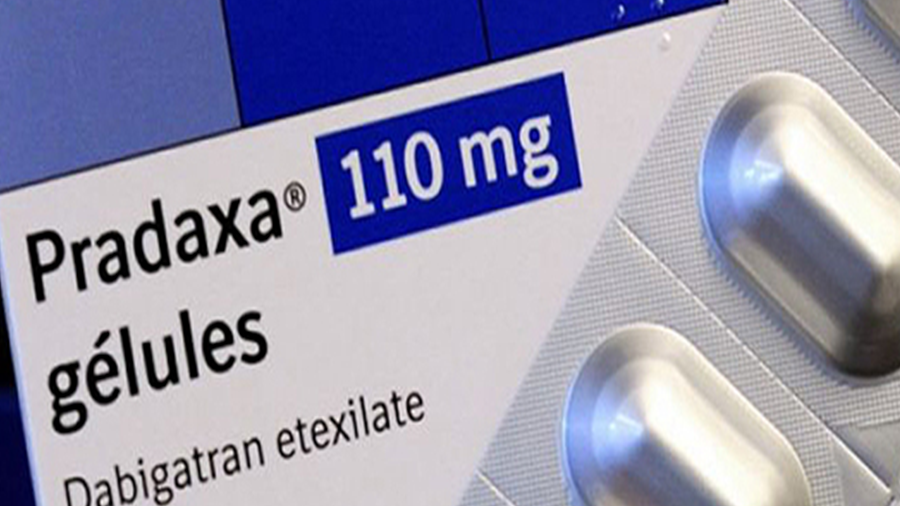Pradaxa® is a blood thinner associated with uncontrollable bleeding, death, and thousands of lawsuits. The manufacturer of the drug is Boehringer Ingelheim Pharmaceuticals. The Federal Drug Administration (FDA) initially approved Pradaxa® (dabigatran) in 2010. There were 540 deaths attributed to the anticoagulant in 2011. In addition, thousands of other patients suffered from serious side effects that same year. By 2014, 4,000 lawsuits against Boehringer Ingelheim were settled when the drug manufacturer paid out $650 million. Thousands more lawsuits against the drug maker are pending.
Red flags
It wasn’t long after Pradaxa® was released that trauma surgeons and emergency room physicians began reporting that patients taking Pradaxa® were suffering from life-threatening bleeding, and reversing the effects of the drugs was difficult. In the year following release of Pradaxa, 2011, the drug was cited on more reports of death or injury than any other drug being monitored that year by the Institute for Safe Medication Practices, according to a New York Times report.
Claims Made in Pradaxa® Lawsuits
Lawsuits against Pradaxa® are being filed because of uncontrollable bleeding and death as well as serious side effects. Pradaxa® increases the risk of brain bleeding, gastrointestinal bleeding, and heart attack, which can all cause death. The following are more of the common side effects of taking Pradaxa®:
- Pink or brown urine
- Bloody stools or black, tar-like stools
- Stomach pain
- Headache
- Heartburn
- Upset stomach and nausea
- Vomiting or coughing up blood or a substance resembling coffee grounds
- Difficulty swallowing or breathing
- Excessive bleeding from a cut
- Chest tightness or pain
- Feeling faint, dizzy, or weak
- Swelling or joint pain
- Heavy menstrual bleeding
- Frequent nosebleeds
- Unusual bleeding or bruising
In addition, some patients have experienced allergic reactions to taking Pradaxa®. The following are signs of an allergic reaction, and patients who experience any of the symptoms should contact their doctor:
- Feeling faint or dizzy
- Swelling of your tongue or face
- Difficulty breathing
- Rashes, itching, and hives
- Chest tightness or pain
Bleeding and Pradaxa®
It’s not always apparent when a person is experiencing internal bleeding. If you are taking Pradaxa®, it is important to be aware of signs that internal bleeding may be taking place. Severe symptoms of internal bleeding include vomiting or coughing up blood or a substance similar to blood, black or bloody stools, bleeding that takes longer than usual to stop, and bruising.
Clinical Trials
The first Pradaxa® clinical trials ran in 2009, and they were called RE-COVER I and Randomized Evaluation of Long-term Anticoagulant Therapy (RE-LY. Boehringer Ingelheim sponsored RE-LY. In the trials, the safety of Pradaxa® was compared to warfarin in the treatment of patients treated for pulmonary embolism (PE) and deep vein thrombosis (DVT). For decades, warfarin had been the traditionally used coagulant for preventing blood clots. In addition, the trials sought to determine whether Pradaxa® was more effective than warfarin at reducing the risk of stroke among patients with atrial fibrillation not caused by a heart valve problem.
The trials reportedly showed that Pradaxa® prevents blood clots leading to stroke as effectively as warfarin. In addition, Pradaxa® was easier to use and potentially caused fewer side effects. Warfarin requires frequent blood tests and is affected by food, and Boehringer Ingelheim has claimed that neither of those issues apply with Pradaxa®.
Clinical trials matching Pradaxa® head-to-head with warfarin became the catalyst for FDA approval, but studies done since that time have shown conflicting results. At the University of Pittsburgh, for example, 9,400 men and women with atrial fibrillation covered by Medicare were surveyed. The results of that study showed that 6% of those taking warfarin suffered a major bleed, compared to 9% of those who took Pradaxa®.
RE-SPECT ESUS is a current and ongoing clinical trial seeking to determine whether Pradaxa® can prevent a second episode of embolic stroke. The participants recruited have experienced a recent episode of embolic stroke of unknown source (ESUS). August 14, 2018, was the scheduled completion date. Results have not yet been released.
FDA Warnings
Pradaxa® has not been recalled by the government, in spite of the dangerous side effects and many deaths associated with the drug. However, the FDA has issued a black box warning regarding dangers associated with stopping the use of Pradaxa®. Patients who quit taking the drug can have an elevated risk of stroke and of experiencing a blood clotting complication. The FDA urges patients who wish to discontinue the use of Pradaxa® to only do so under the care and supervision of a doctor.
Patients sometimes need to stop taking Pradaxa® prior to a dental or medical procedure or surgery. Patients should speak to the physician who prescribed the blood thinner to them and find out when Pradaxa® should no longer be taken, leading up to the procedure. In addition, a doctor should give instructions on when to resume taking Pradaxa® again.
In addition, in patients who have an epidural or spinal tap, Pradaxa® can cause a dangerous blood clot in the spinal cord, which can lead to paralysis.

Spinal Blood Clots and Pradaxa®
Patients have a heightened risk of developing a spinal blood clot after receiving a spinal tap or epidural if:
- An epidural catheter is placed in your spine for the purpose of administering certain medications
- You have a history of spinal surgeries and other spinal issues
- You have a history of difficult or repeated spinal punctures
- You are currently taking blood thinning medicines or other non-steroidal, anti-inflammatory drugs (NSAIDs).
You should be closely monitored by your doctor for signs of a spinal blood clot if you are taking Pradaxa® and receive a spinal puncture or spinal anesthetic. Immediately contact your doctor if you experience any of the following symptoms:
- Numbness and tingling
- Incontinence
- Back pain
- Muscle weakness, particularly in your feet and legs
Heart Attacks and Pradaxa®
Events such as heart attacks, acute kidney failure, stroke, and liver failure have been reported by patients using Pradaxa®, in addition to the most frequent adverse event, gastrointestinal bleeding. In two separate studies comparing Pradaxa® users with other patients using such blood thinning agents as warfarin, both published reports showed concurrently that there is an increased risk of heart attacks among patients taking Pradaxa®.
If you are taking Pradaxa® and experience any of the following severe symptoms of heart disease, immediately seek medical help:
- Shortness of breath
- Chest pain
- Loss of consciousness and dizziness
Antidote and Reversal Agent for Pradaxa®
Pradaxa® was sold by Boehringer Ingelheim without a bleeding remedy for five years. During that five-year period, reports of adverse events among patients who took Pradaxa® quickly outpaced those who were treated with warfarin. Thousands of the patients taking Pradaxa® suffered uncontrollable bleeding, and sometimes it was fatal.
Accelerated approval of an antidote to uncontrollable bleeding suffered by Pradaxa® patients was approved by the FDA in October 2015. Praxbind (idarucizumab) can reverse the blood-thinning effects of Pradaxa® in patients experiencing uncontrollable bleeding. It is currently the only antidote for Pradaxa® that has been approved by the FDA.
Many healthcare providers are concerned about the safety of Praxbind, since it received accelerated FDA approval. Many medical professionals carefully advise patients to consider both benefits and drawbacks associated with taking Pradaxa® and other blood thinners that are relatively new.
Manufacturing, Design, and Marketing Defects
From the time of its release, Boehringer Ingelheim promoted Pradaxa® as a better option than the longer-used warfarin, with the following claims:
- There are fewer interactions with other medications and with foods; and
- Determining the correct dosage of Pradaxa® doesn’t require weeks of calibration, unlike warfarin.
These claims have seemingly been disproven, however. The following is a timeline of label updates and Pradaxa® warnings, providing a glimpse into proven results among patients taking the blood thinner:
2010: The drug label for Pradaxa® was updated after additional bleeding events in the RE-LY trial data were discovered.
2011: Reports of serious bleeding events resulted in a post-market review of the drug by the FDA. The organization sought to determine whether there were more than the expected number of incidents of serious bleeding.
2013: A black box warning was added by Boehringer Ingelheim regarding risks of discontinuing the use of Pradaxa® prematurely, and it states that some patients experience an increased risk of spinal hematomas.
2014: A safety communication was issued by the FDA, stating that Pradaxa® causes a greater risk of gastrointestinal bleeding than warfarin. In addition, the safety communication says Pradaxa® has a lower risk for ischemic stroke, death, and intracranial hemorrhage and a similar risk for myocardial infarction.
Many individuals involved in lawsuits against the drug maker argue that the higher risk of gastrointestinal bleeding is something they should have been aware of, and Boehringer Ingelheim should have appropriately warned doctors and consumers. Plaintiffs also claim that there was a violation in regulatory requirements because in the manufacture and marketing of Pradaxa®, there was not a proper warning regarding the serious, sometimes life-threatening, risks of taking the anticoagulant. By producing and promoting such a dangerous drug, plaintiffs also argue that Boehringer Ingelheim is guilty of a breach of warranty and of negligence.
Pradaxa® Bellwether Trials
Mary Boone was prescribed Pradaxa® by her doctor, to reduce her risk of a stroke from atrial fibrillation. Boone died on March 24, 2014, due to an uncontrollable gastrointestinal bleed. Her estate filed the first Pradaxa® case that went to a jury trial. According to court documents, Boehringer Ingelheim argued that the warnings for Pradaxa® were adequate, and the drug maker maintained that the deceased’s physician understood the risks involved in prescribing the drug. Members of the jury sided with the drug company in a verdict handed down on March 23, 2018.
A lawsuit filed by Mary Lou Gallam became the second Pradaxa® bellwether trial. According to court records, in 2011, Gallam was prescribed Pradaxa®; and she subsequently experienced a “major bleeding event” in April 2014. Gallam’s case was also a jury trial, and jurors found in favor of the drug company in a verdict given on May 7, 2018.
Have you Suffered Dangerous Effects of Pradaxa®?
You may be eligible to file a Pradaxa lawsuit if you took the blood-thinner and suffered dangerous effects, such as severe bleeding. In addition, if you are a family member of someone who died following complications associated with the drug, such as brain bleed or gastrointestinal bleeding, it is possible that you could recover lost income and expenses by filing a lawsuit.
Types of Pradaxa® Lawsuits
A short time after the release of the blood thinner in 2010, it was evident that patients were experiencing a higher than usual number of adverse events, such as dangerous gastrointestinal bleeding. Early on, Pradaxa® lawsuits were filed in various states and in different federal district courts. When a Pradaxa® lawyer has examined a case and determined that a viable claim exists, one of the following two basic types of Pradaxa lawsuits is filed:
- Personal Injury Lawsuits involve claims made by patients who took the anticoagulant and suffered severe bleeding.
- Wrongful Death Lawsuits are claims filed by family members who died as a result of bleeding complications associated with taking Pradaxa®.
Should I Get a Pradaxa® Attorney?
There are many complexities involved with lawsuits related to product liability. A notable complication is that drug makers make billions of dollars annually on their products, and they willingly spend millions of dollars in lawsuits, to maintain the status quo and protect their continued profits. For these reasons, it is very important to work with an experienced Pradaxa® lawyer.

Stephanie McHugh
Stephanie McHugh is a professional writer who specializes in legal articles, technical blogs, and website copy. She is a former Official Court Reporter for a District Court in Houston, Harris County, Texas; newspaper columnist; and teacher. Stephanie is a professional writer with extensive experience reporting on health-related topics for publication. She developed an interest in health-related litigation as a court reporter while taking depositions for a class action lawsuit. Through her writing, she has been glad to help raise awareness about public health threats, to benefit victims.
CONNECT WITH A LAWYER

Get a Free Pradaxa®
Case Review
Case Review
If you are one of the thousands of people who have experienced uncontrollable bleeding after taking Pradaxa®, you may be eligible to receive compensation for your injuries.
Sources
- https://www.boehringer-ingelheim.com/press-release/boehringer-ingelheim-announces-comprehensive-settlement-us-pradaxa-dabigatran
- 10.1056/NEJMc1407908
- https://www.lexislegalnews.com/articles/22833/with-last-2-cases-gone-pradaxa-mdl-judge-again-recommends-termination
- http://www.ilsd.uscourts.gov/documents/mdl2385/MinuteOrder656.pdf
- http://www.ilsd.uscourts.gov/documents/mdl2385/CMO82.pdf
- https://dplvpyaq85yq5.cloudfront.net/0022000/22833/28171221003r.pdf
- https://www.law360.com/articles/542027/boehringer-pays-650m-to-settle-pradaxa-mdl
- https://www.nytimes.com/2014/05/29/business/international/german-drug-company-to-pay-650-million-to-settle-blood-thinner-lawsuits.html
- http://www.ilsd.uscourts.gov/documents/mdl2385/CMO82.pdf
- http://www.ilsd.uscourts.gov/documents/mdl2385/1.2385TransferOrder.pdf
- https://www.boehringer-ingelheim.com/press-release/boehringer-ingelheim-announces-comprehensive-settlement-us-pradaxa-dabigatran
- https://www.fda.gov/ForConsumers/ConsumerUpdates/ucm332912.htm
- https://clinicaltrials.gov/ct2/show/NCT02239120


